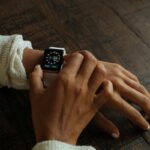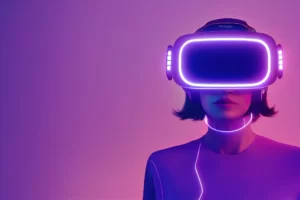Our daily lives now include a variety of electronic gadgets that can be implanted in the body or worn as accessories. This is known as wearable technology. These gadgets have microprocessors and sensors that enable them to communicate with the user and their surroundings. Devices may now connect to the Internet and send and receive data thanks to the expansion of mobile networks.
Fitness trackers were the first generation of wearable technology to gain market acceptance; smartwatches and Internet connected eyeglasses soon followed. These wearables have useful applications including activity tracking and health parameter monitoring. They are effective communication and productivity tools since you can use them to make calls, send messages, and access programs.
Implantable gadgets like microchips that serve as keys and password substitutes are becoming a part of wearable technology. These chips, which can be implanted in the fingertip, connect to other devices via near field communication (NFC) or radio frequency identification (RFID) technology.
In a Nutshell
- A diverse variety of electronic devices that can be implanted in the body of the user or worn as accessories make up the quickly expanding field of wearable technology.
- They have sensors and microprocessors that enable them to communicate with the user and the surroundings.
- Wearables can track physical activity, monitor health indicators, and offer communication and productivity capabilities, among other useful applications.
- Implantable gadgets, including microchips that can take the place of keys and passwords, are now a part of wearable technology.
Wearable technology, also known as “wearables,” is a category of electronic devices that can be worn as accessories, embedded in clothing, implanted in the user’s body, or even tattooed on the skin. These are hands free devices with practical uses, powered by microprocessors, and with the ability to send and receive data over the Internet.
Wearable technology is at the front of the Internet of Things (IoT) because of how quickly these kinds of devices are being used.
How Portable Technology Works
Wearable technology may have been around since the 13th century, when the first glasses were made. Watches small enough to wear have been around since the 1500s. But modern wearable technology is defined by incorporating a microprocessor and an Internet connection.
The most profound technologies are those that disappear. They weave themselves into the fabric of everyday life until they are indistinguishable from it.
Mark Weiser
The growth of mobile networks enabled the development of wearable technology. Fitness trackers were the first major wave of wearable technology to catch on with consumers. Then, the wristwatch became a display, and more robust mobile apps were added.
Bluetooth headsets, smartwatches and Internet connected glasses allow data to be received from Wi Fi networks. The gaming industry adds more wearables, with virtual reality and augmented reality headsets.
Specialized and Practical Applications
There have also been some failures, such as Google Glass. Maybe these Internet connected glasses will re emerge for specialized uses, but not as a fashion accessory. Wearable technology seems to be moving away from simple accessories and toward more specialized and useful uses. Microchip implants are now being used to replace keys and passwords.
Embedded in the fingertip, the chips use near field communication (NFC) or radio frequency identification (RFID) and are similar to chips used to track lost pets. However, the real applications of wearable technology can be found in medical devices.
Cyrcadia Health has developed Cyrcadia Breast Monitor, a smart patch capable of detecting early signs of breast cancer and transmitting the information to a laboratory for analysis.
Examples of Wearable Technology
Healthcare, fitness, entertainment, and gaming are just a few of the sectors and uses for wearable technology. Here are some instances of wearable technology in use:
- Fitness trackers are wrist mounted gadgets that track physical activity, including steps taken, calories burnt, and heart rate. They can be used to keep track of exercise objectives and track advancement over time.
- Wearable computers that can access the Internet and run programs are known as smartwatches. They provide services like texting, calling, and mobile payments.
- Internet connected glasses have displays integrated into them that can be used to browse the internet, shoot pictures and movies, and show augmented reality material.
- Microchip implants: These tiny chips can be inserted into the body to take the place of keys and passwords. To connect with other devices, they communicate using NFC or RFID technologies.
- Medical emergencies can be identified and monitored with the use of wearable medical alert monitors. The elderly and the disabled can particularly benefit from them.
- Temporary tattoos called “smart tattoos” include bendable electronic sensors within. They can be used to keep an eye on muscle activity, sleep disorders, and heart and brain activity.
- The Cyrcadia breast monitor is a smart patch that can identify early indications of breast cancer and send the data to a lab for examination.
- Headsets for virtual and augmented reality – These gadgets allow for immersive gaming and entertainment.
New applications are continually being created for wearable technology, which is always changing. We may anticipate seeing even more creative uses for wearable technologies as technology develops.
Wrap Up
The emergence of wearable technology is revolutionizing how we work, live, and interact with our surroundings. Wearable technology is becoming increasingly specialized and useful, with the potential to address real world issues. With tools like Cyrcadia Health’s smart patch, which can identify early breast cancer indications, wearable technology has useful uses in the healthcare industry. Additionally, it is used to track heart and brain activity, extend the mobility of the elderly and crippled, and even track air quality.
The potential for wearable technology to enhance health outcomes, boost productivity, and offer new kinds of entertainment means that it is likely to become much more ingrained in our daily lives in the future. It will be fascinating to see the new possibilities and opportunities that wearable technology will bring about as it continues to develop.
FAQs

Wearable technology is made to make our lives simpler and more convenient by enabling hands free access to information and data. They can be used to keep track of everyday activities, access the Internet, and monitor health and fitness.
Wearable technology is generally secure, but it’s crucial to use it properly and in accordance with the manufacturer’s guidelines. Some gadgets release radiation that, when used for prolonged periods of time, may be dangerous.
Wearable technology has the ability to gather and transmit private information, including biometric, location, and personal health data. It’s critical to select gadgets from trustworthy producers and to be informed about the data they collect and the purposes for which they are utilized.
By delivering real time information to doctors, remote patient monitoring, and improved chronic illness management, wearable technology has the potential to change healthcare. Wearable technology has the ability to deliver medication, monitor vital signs, and spot illness early warning signals.
With new wearable technology devices and applications being created on a regular basis, the future seems promising. As technology develops, we may anticipate even more creative applications for wearable technology in industries like healthcare, entertainment, and gaming.
Article sources
At Capital Maniacs, we are committed to providing accurate and reliable information on a wide range of financial topics. In order to achieve this, we rely on the use of primary sources and corroborated secondary sources to support the content of our articles.
Primary sources, such as financial statements and government reports, provide firsthand evidence of financial events and trends. By using primary sources, we are able to directly reference information provided by the organizations and individuals involved in these events.
Secondary sources, such as financial analysis and commentary, interpret and analyze primary sources. While these sources can be useful for providing context and background information, it is important to use corroborated sources in order to ensure the accuracy and reliability of the information we present.
We take pride in properly citing all of our sources, both primary and secondary, in order to give credit to the original authors and to allow our readers to verify the information for themselves. We appreciate your trust in our website and are committed to upholding the highest standards of financial journalism.
- National Library Of Medicine-National Center For Biotechnology Information – An Introduction To The Cyrcadia Breast Monitor: A Wearable Breast Health Monitoring Device Accessed Oct. 5, 2021.
- HealthAffairs – AIR Louisville: Addressing Asthma With Technology, Crowdsourcing, Cross-Sector Collaboration, And Policy Accessed Oct. 5, 2021.
- Becker’s Healthcare – 5 Medical Wearables Cleared by the FDA in 2019 Accessed Oct. 5, 2021.





















